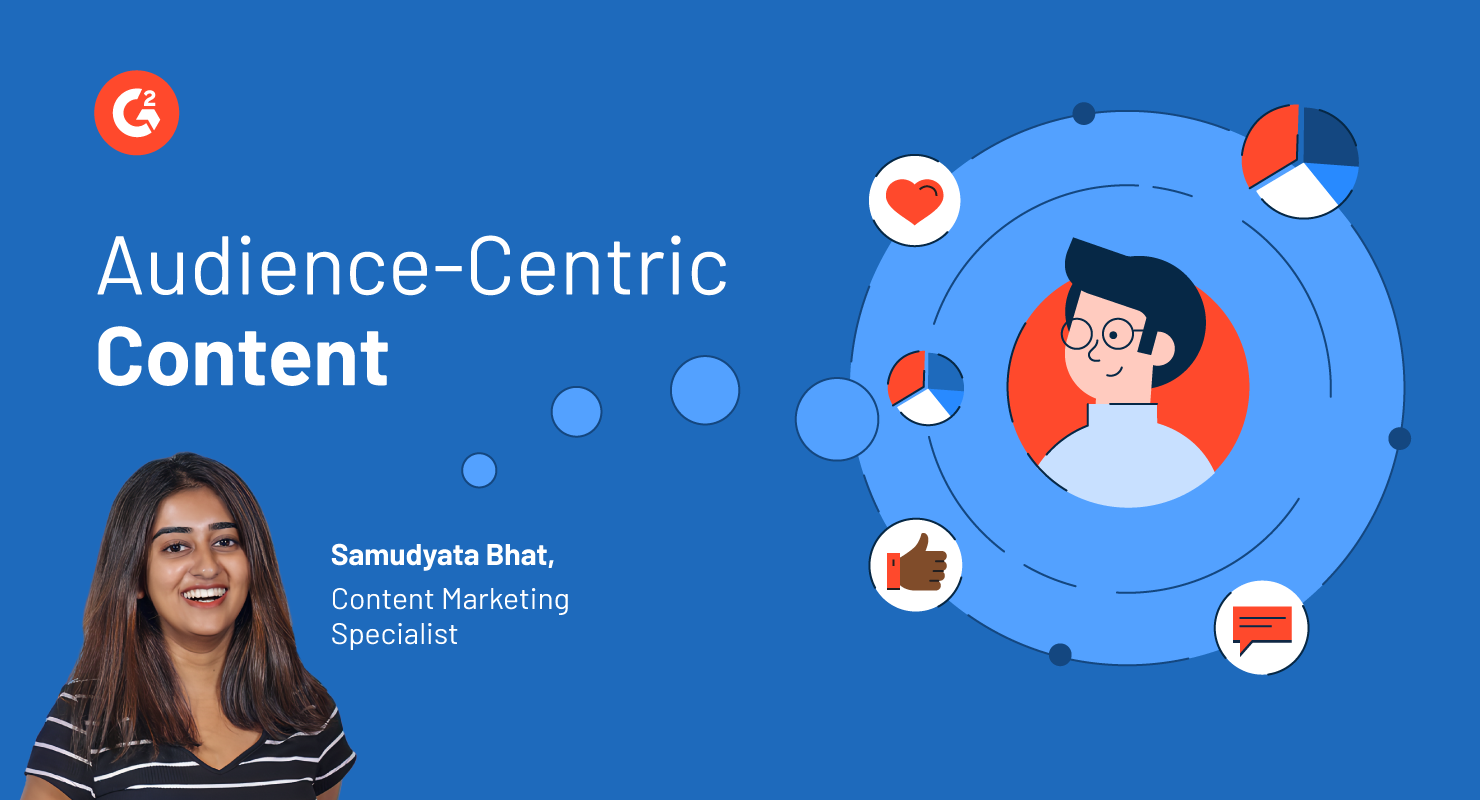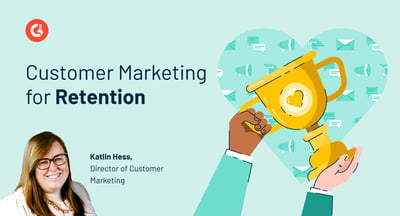July 25, 2024
 by Samudyata Bhat / July 25, 2024
by Samudyata Bhat / July 25, 2024

Imagine you spend hours crafting an engrossing blog post with eye-catching visuals and a punchy title. You hit publish, expecting a wave of engaged readers. But by the next day, your analytics paint a different picture. Clicks are good, but bounce rates are sky-high, and comments are crickets.
Sound familiar? This is the click-chasing content mirage that tricks many marketers. With a Master’s degree in digital marketing and over three years of content marketing experience, I've seen this scenario play out countless times.
It highlights a major problem with content marketing today: not enough focus on building relationships with real customers.
It's easy to get caught up in the chase for clicks. We churn out blog posts, infographics, and videos, with hopes of attracting a flood of visitors to our websites.
But the truth is that clicks are a vanity metric. They don't tell the whole story. What truly matters is growing a loyal audience of engaged customers who find value in your content. And that is what moves me as I create content every day.
The problem with click-chasing content is that it treats your audience as a monolith that’s only interested in superficial engagement. This approach might inflate your traffic numbers, but it fails to resonate with the potential customers who could benefit from your products or services.
By prioritizing audience-centric content, you shift the focus from short-term clicks to long-term relationships. So take the time to understand the persona of your ideal customer. What are their needs? What are their pain points?
Once you know all that, create content that addresses those challenges directly by providing genuine value and building trust with your target audience. This approach nurtures loyalty, increases engagement, and eventually converts clicks into customers.
An ICP – ideal customer persona – represents your dream target audience in the form of a detailed profile. It goes beyond demographics like age and income. We’re talking about a fictional representation that captures their:
By understanding your ICP on this deeper level, you can address the challenges your audience faces and tailor your content to speak directly to their needs and interests. No more creating generic blog posts that sound like they could be on any website. Instead, you produce targeted content that feels like a conversation with a friend who truly understands them.
But before digging deeper into ICP, let’s talk about the problem with click-chasing content.
Have you ever written a headline just so your reader has to click? "YOU WON'T BELIEVE..." might grab initial attention, but they rarely deliver value. That's clickbait – content designed to lure you in with sensational promises and misleading information.
The allure is obvious: a quick surge in traffic. But clickbait cuts like a double-edged sword. Sure, you might get the initial click, but what happens after? Disappointed readers who feel tricked will bounce from your site in seconds. This "bait and switch" tactic erodes trust and damages your brand reputation.
Data shows that clickbait content often boasts high click-through rates, but those victories ring hollow. Look closer and you'll see abysmal dwell times and sky-high bounce rates.
These metrics expose the truth that clickbait doesn't convert. Disgruntled visitors won't subscribe to your newsletter, download your ebook, or become paying customers.
The bottom line? Chasing clicks brings short-term gains and long-term consequences.
Ready to create content that truly connects with your audience? Let’s walk through a step-by-step process.
We have to think of painting a detailed portrait of your dream customer. As discussed earlier, this moves past basic demographics like age and income. Your ICP will become a comprehensive customer profile that describes their:
At G2, we produce several different types of content daily. We want to make sure our content brings in traffic, while informing and engaging our readers. Our deep customer personas help us understand our audience by fleshing out these details.
After you’ve defined your ICP, it's time to delve deeper into their world. Here are some methods to truly understand their challenges and interests.
“Our job is to find pain points that keep buyers up at night. You can't simply reverse engineer the pain points to fit them in your content. Connect pain points with desired outcomes and internal barriers, to create content that resonates deeper.”
Sudipto Paul
Sr. Content Marketing Specialist, G2
Here's where we bring the data together to create a powerful tool: the ICP Dashboard.
Let’s discuss an example of an ICP dashboard we created using G2 review data. We focused on a software category of asset tokenization platforms. A platform like G2 consists of millions of highly valuable data points. We aggregated those data points, i.e., user reviews of various software products under this category.
Here’s how we did it.
"At G2, there's plenty of data for us to use. G2 Reviews are a gold mine of insights for understanding software buyers and power users. Our ICP Research Dashboard provides a peek into the audience's minds, helping us create the right content.”
Mohammad Farooq
Sr. Manager of Content Marketing, G2
And this is our creation:
Data blurred is G2’s proprietary data. For more information, explore G2’s Marketing Solutions.
By creating an ICP dashboard with real-time data insights, you gain a dynamic picture of your target audience. This allows you to refine your content strategy according to the latest trends and ensures your content remains relevant, addressing the most pressing needs of your ICP.
With your ICP's needs in mind, it's time to craft valuable, targeted content. Here's where the format comes into play.
Remember, whatever format you use should always serve the content and harmonize with your ICP's preferences.
Creating great content only makes up half the battle. At this point, you need to get it in front of the right eyes. Here's where your ICP's online behavior comes in handy.
Here’s where you subscribe to G2’s newsletter. Get the inside scoop: Sign up for G2 Tea!
Remember, the key is aligning your content promotion strategy with the specific channels and formats your ICP prefers. By going to where your target audience already is and giving them important information that speaks to their concerns, you can win them over.
While a single ICP helps understand a core audience segment, communicating with diverse users also requires a more nuanced approach. Here are some strategies you can employ.
Tip: Customer relationship management (CRM) software can help you segment your audience.
Remember, even though your content caters to different needs, make sure it still reflects your overall brand voice and identity.
Success lies in building genuine relationships with your audience. By taking the time to understand your ICPs, you’ll make content that compels them to click – and stick around for a while.
Remember, content marketers run marathons, not sprints. By prioritizing your audience, your content will attract and retain customers, so use our guide and start building relationships that truly matter - today!
Want to learn more about how to create meaningful customer relationships? Read up on experiential marketing and how it can elevate your efforts.
Samudyata Bhat is a Content Marketing Specialist at G2. With a Master's degree in digital marketing, she currently specializes her content around SaaS, hybrid cloud, network management, and IT infrastructure. She aspires to connect with present-day trends through data-driven analysis and experimentation and create effective and meaningful content. In her spare time, she can be found exploring unique cafes and trying different types of coffee.
What’s common between Taylor Swift and B2B companies?
 by Sidharth Yadav
by Sidharth Yadav
You already know customer engagement is more than a buzzword. It’s the difference between...
 by Evelina Milenova
by Evelina Milenova
Have you ever wondered why certain brands have fiercely loyal customers? The ones who don’t...
 by Katlin Hess
by Katlin Hess
What’s common between Taylor Swift and B2B companies?
 by Sidharth Yadav
by Sidharth Yadav
Have you ever wondered why certain brands have fiercely loyal customers? The ones who don’t...
 by Katlin Hess
by Katlin Hess


